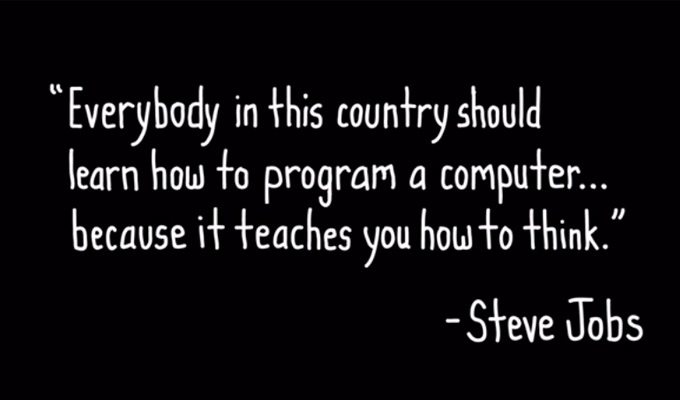I always found it cynical when I didn't receive a clear answer so I've always tried to shift my focus from the latter to the former.
To this end, our department has routinely used a work habits and employability rubric to assess our students and in accordance with 21st century learning, we also ask students to have a (rather significant) role in assessing their progress. While frequently a sore spot in your Gluteus Maximus, the information gathered by these type of activities has frequently allowed me to refine and develop my own teaching practice.
 |
Image from @sylviaduckworth |
The rubric itself can be found at http://goo.gl/forms/dH4jPr4KE7 and any teachers reading this can feel free to email me if they want access or their own copy of this rubric. I have been an early adopter of Google Drive and I find the data collection power of Forms to be excellent.
If you choose to use this kind of rubric, you will need to trust that students are being honest about their names; in our district we have district email accounts that are automatically recorded if the Form is set up correctly.
The rubric clearly states what is expected of students and while some parts, such as attendance, are as institutional as they are practical (especially in creative or knowledge career fields), the rest allow students a peek into what is valued in the real world, especially that of technology.
The joy of jumping into the water of assessing real world skills, especially in technology, is that we can begin to modify and redefine what the tools we are teaching and using to teach mean, because we are less constrained by the expectations of a traditional teaching expectation. See the graphic on the right for the most succinct analysis of this effect that I have run across.
The most important part of that rubric is the Peer Support section in my opinion. This portion comes with a story from me because I have experienced this peer support early in my teaching career and I credit it with keeping me going through the rough early years of a teaching career.
The way peer support helped me was, as far as I know, through serendipity. During my first full year teaching contract I was tasked with teaching a full year of English as a replacement for a long-tenured teacher who had gone on disability leave for health reasons. This contract eventually branched out into Phys Ed and Robotics but not before I realized that I had the best classroom in the school. The school was built as one C-shaped hallway that encircled the library. Many of the classrooms, including mine, were attached to the library; but my room had the distinct advantage of being the perfect shortcut, being attached the the PE hallway and the library, to avoid one frequently locked door to the library (and therefore the photocopier).
| This gem from theoatmeal.com is essential reading for all teachers. Even those of you who claim to not be caffeine dependent. |
The following year I was a part of a school that was at capacity due to a reshuffle of language programs. Myself and two other teachers were assigned to an office in the coffee room. Not the staff room mind you...the coffee room. Like my previous experience, having a couple of people to bounce things off of and help out was hugely helpful for me and, I hope, for them. The other advantage was that since we were teaching in other people's classrooms being at capacity, it frequently displaced other teachers to our Nomad's Hut...sorry, coffee room...to share their wisdom with us just starting out. Nomad's Hut was what I preferred even if other staff liked Cart People as our nickname(even though my cart was predominantly digital).
To any administrators reading this blog, please keep my experience in mind as I attribute this peer support experience to keeping me in the profession. Designing spaces to make people interact, and yes to occasionally come into conflict, is something that should be included in any plan involving new teachers. A quick shout out to @principalwise who was our fearless leader at the time and who, intentionally or not, spurred the development of these real world skills in a handful of her young teachers. I, for one, thank you for it Michelle.
The conclusion to all of this is that through technology, and good instructional and behavioral design, we can make sure that our students, and our developing teachers, can harness real world skills to not only survive but to thrive in challenges that may be impossible for somebody in a traditional learning or teaching environment.
Cheers, and enjoy the summer coffee detox. (Says the teacher still writing a blog after midnight in July)





